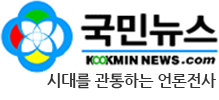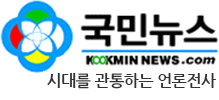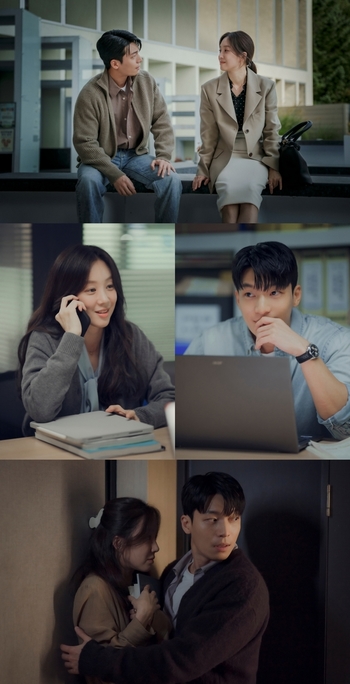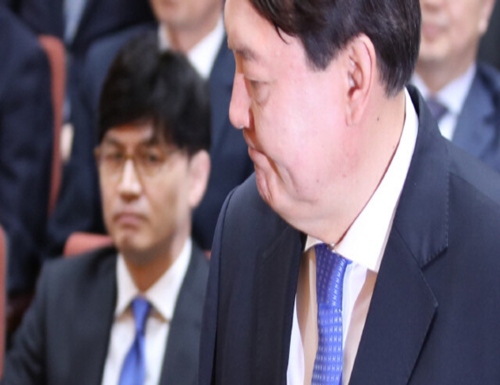크리스마스.산타크로스 문화의 고향은 한국이다!
크리스마스는 한국의 새해맞이 축제!빨간 산타크로스는 치우천왕!
크리스마스.산타크로스 문화의 고향은 한국이다!크리스마스는 한국의 새해맞이 축제!빨간 산타크로스는 치우천왕!유럽인들이 사용하는 영어는 인도-유럽어족에 속한다. 인도-유럽어족의 조상어는 인도지역을 지배한 아리안족이 사용한 산스크리트어다. 아리안족은 인도지역과 유럽지역으로 이주한 한민족을 의미한다.
The English spoken by Europeans belongs to the Indo-European family. The ancestral language of the Indo-European family is Sanskrit, spoken by the Aryans who ruled India. Aryans refer to the Korean people who migrated to India and Europe.
서울의 한강을 고대어로 아리수라고 부른다. 아리안족은 한강중심의 한반도지역의 한민족임을 분명히 알 수가 있다. 서울대 신용하 석좌교수가 지구의 기후를 전제로 잘 설명해 주었듯이 빙하기 당시에 북반구의 인류가 동굴이 많은 한반도로 대거 이주하여 수렵생활과 농경생활을 하였다.
The Han River in Seoul is called Arisu in ancient language. It can be clearly seen that the Aryans are the Korean people of the Korean peninsula centered on the Han River. As Seoul National University chair professor Shin Yong-ha well explained on the premise of the Earth's climate, during the Ice Age, humans from the northern hemisphere migrated to the cavernous Korean Peninsula to lead a hunting and agricultural life.
인구가 증가하고 북반구의 기온이 올라가자, 다시 북쪽으로 이주하였다는 것이다. 충청도 청원지역에서 1만 5천년 전의 벼의 씨앗이 발견되었는데, 이는 개량종으로 이미 한반도의 한민족은 인류 최초의 농경생활을 하였다는 사실을 인류고고학적으로 증명하였다. 따라서 농경생활을 하였던 1만년에 가까운 요하지역의 홍산문명이나 기원전 3000-4000년 전의 인더스.슈메르 문명의 주역은 모두 한반도에서 이주해 간 한민족(슈메르.아리안족)이라는 사실을 알 수 있다.
As the population increased and the temperature in the northern hemisphere rose, they migrated north again. A 15,000-year-old rice seed was discovered in the Cheongwon area of Chungcheong Province, which is an improved species and has already proven, archaeologically, that the Korean people on the Korean Peninsula lived the first agricultural life of mankind. Therefore, it can be seen that the main characters of the Hongsan civilization of the Yoha region for nearly 10,000 years, which lived an agricultural life, and the Indus and Sumerian civilizations of 3000-4000 BC are all the Korean people (Sumer and Aryan people) who migrated from the Korean Peninsula.
인더스문명과 슈메르문명의 주역은 동일한 한민족이다. 이들은 모두 오늘날같은 한국어를 사용하였고, 한국문화를 가지고 살았던 한국인들이였다. 이들이 바로 그리스.이집트.히브리 문명의 뿌리가 된 것이다. The main characters of the Indus and Sumerian civilizations are the same Korean people. These were all Koreans who spoke the same Korean language as today and lived with Korean culture. These are the very roots of Greek, Egyptian, and Hebrew civilizations.
1만년에 가까운 고인돌이 세계에서 가장 많이 분포되어 있는 한반도지역의 사투리를 사용한 한반도 한민족이 인구가 증가하자, 만주를 통하여 서방으로 이주하여 갔던 것이다.
As the population of the Korean people, who spoke the dialect of the Korean Peninsula, where dolmens of nearly 10,000 years are most distributed in the world, increased, they migrated west through Manchuria.
그런데, 이 산스크트어는 한반도 사투리들이다. 영국에서 100년간에 걸쳐서 편찬했다는 대영백과사전은 영어의 조상어인 산스크리트어를 수록하고 있는데, 발음자체가 현재 한반도의 한국인들이 사용하고 있는 사투리들이다.
By the way, this Sanskt language is the Korean dialect. The British Encyclopedia, which was compiled over 100 years in England, contains Sanskrit, the progenitor language of English, and the pronunciation itself is a dialect used by Koreans in the Korean Peninsula.
이는 고대 한반도지역의 한민족이 만주를 통하여 서방으로 이주하여 유럽지역을 지배한 왕족집단이 되었다는 부정할 수 없는 사실을 증명한다. 유럽왕조들이 자신들의 상징물로 사용하는 봉황.용 등의 한국토템문화들이 이를 증명하고 있다.
This proves the undeniable fact that the Korean people of the ancient Korean Peninsula migrated to the West through Manchuria and became a royal group that dominated Europe. Korean totem cultures such as phoenix and dragon used by European dynasties as their symbols prove this.
 '크리스마스'라는 말의 어원은 본래 한국말이다. 즉, 구리+맛이 결합된 말이다. 구리는 쿠리.크리스로 변음화되었고, 맛은 길게 발음되어 마스가 된 것이다. 그러나, 말은 크게 변하지 않는 한국말인 것이다. The etymology of the word 'Christmas' is originally Korean. In other words, it is a combination of copper + taste. Guri was changed to Kuri. Chris, and the taste was pronounced long and became Mas. However, the Korean language does not change much.
'구리'는 '구려'로 표기되기도 한다. 중국의 사서인 [사기]를 기록한 사마천은 "구려의 천자가 치우다."라고 기록하고 있는데, 이 때 '구려'는 '구리'로 자신들의 환인씨의 후손임을 말하는 나라이름이였던 것이다.
'Guri' is sometimes referred to as 'Guryeo'. The Chinese librarian, Sima Qian, who wrote [Sagi], records that “the celestial ruler of Guryeo is Cheewoo.” At this time, 'Guryeo' was 'Guri', the name of a country that said that they were descendants of their Hwanin clan.
 그리고 중국 동해안지역에 거주하였던 고대 한민족을 '구이'족으로 기록하고 있는데, 이 또한 환인씨의 후손들을 의미하는 말이다.
'구리'는 '아홉마을'이란 뜻이고, '맛'은 '축제'를 의미하는 말이다. 아홉마을의 새해 축제를 의미하는 것이고, 수렵과 유목생활을 하였던 북만주 지역의 한민족에게는 새해가 12월 25일이다. [삼국유사]에 기록된 한민족 국조가 지금으로부터 9천년 전에 존재하신 환인단제(지구제왕)다. 그런데, 한민족 정통사서인 [환단고기]에는 환인단제에게는 환인을 포함한 아홉형제들이 있었는데 이들 이홉형제의 후손들이 9환족이 되었다는 기록이 있다. 그런데, 9환족의 기원이 되는 환인의 아홉형제의 마을공동체의 새해축제가 바로 '크리스마스'인 것이다.
And the ancient Han people who lived in the east coast of China are recorded as which also means the descendants of the Hwanin
'Guri' means 'nine villages', and 'taste' means 'festival'. It means the New Year's festival of the nine villages, and for the Korean people in northern Manchuria who lived a hunting and nomadic life, the new year is December 25th. The national dynasty of the Korean people recorded in [Samguk yusa] is Hwanindanje (Earth King) that existed 9,000 years ago. However, in [Hwandangogi], an orthodox historical book of the Korean people, there is a record that Hwanindanje had nine brothers, including Hwanin, and the descendants of these nine brothers became nine Hwanjoks. However, 'Christmas' is the New Year's festival of the village community of the nine brothers of Hwanin, the origin of the nine Hwan tribes.
한민족 정통사서인 [환단고기]에는 환인씨의 나라인 파나루국에 대해서 "천해 동쪽인 파나루산 아래 환인씨의 나라가 있다."라고 기록하고 있는데, 이는 천해가 바이칼 호수를 가리키고 파나루산이 대흥안령산을 가리킨다고 했을 때 훗날 12개의 연방 환국을 거느리게 되는 환인씨의 나라는 초기에 북만주지역에 존재하고 있었음을 알 수 있다.
In [Hwandangogi], an orthodox historical book for the Korean people, it is written about Panaru, the country of the Hwanin clan, that "The country of the Hwanin clan is located under Mt. Panaru in the east of the Cheonhae Sea.", The country of the Hwanin would later lead the 12 federal reunification countries. existed in northern Manchuria in the early days.
그리고 중국사료에는 이들 환인씨의 후손들을 초기에는 숙신으로 기록하고 있고, 나중에는 읍루.말갈.여진으로 기록하고 있음을 알 수 있다. 그러니까 100년전까지 중국대륙을 지배하고 다스린 청나라를 건국한 주역이 바로 환인씨의 직계후손인 것이다.
중국을 사대주의로 섬기던 조선시대에는 이들 환인씨의 직계후손인 여진족을 오랑캐 취급을 했으나, 환인씨의 직계후손인 만주족은 뿌리로 가면 한민족이였던 것이다.
And it can be seen that the descendants of these Hwanin clan are recorded in Chinese historical records as Sukshin at first, and later as Eupru, Malgal, and Yeojin. That is, the direct descendants of the Hwanin clan were the protagonists who founded the Qing Dynasty, which ruled and ruled mainland China until 100 years ago. In the Joseon Dynasty, when China was served with generations, the Yeojin people, direct descendants of the Hwanin clan, were treated as barbarians, but the Manchus, the direct descendants of the Hwanin clan, were originally Korean.
이들 환인씨가 살았던 북반구지역(북만주-시베리아)에서는 12월 25일이 새해이기 때문에 신을 상징하는 태양을 생명의 빛으로 숭배하여 신에게 감사제사를 드리고, 마을공동체가 노래와 춤과 술로 축제를 벌이며 한마음이 되었으며, 결혼하지 않는 남녀들은 사랑을 나누며 미래를 설계하는 날이 바로 12월 25일이였다.
In the northern hemisphere region (Northern Manchuria - Siberia) where these Hwanin lived, since December 25th is the new year, the sun, which symbolizes God, is worshiped as the light of life to give thanks to the gods, and village communities hold festivals with song, dance and alcohol. December 25th was the day when men and women who were not married were making love and planning their future.
 그러니까 크리스마스는 한민족의 조상들이 되는 환인 공동체의 새해축제인 것이다. 이러한 새해축제는 수렵-유목생활을 하였던 환인씨의 후손들이 훗날 말을 타고 서방으로 이주하여 한국문화를 전파하며 서방을 지배하면서 정착되었으며, 이것이 서방에서는 로마가 민족신으로 수용한 태양신의 탄생일이 된 것이다.
기독교를 국교로 삼은 로마의 교부들은 니케아 종교회의를 통하여 예수의 탄생일을 자신들의 태양신의 탄생일로 정함으로써 오늘날까지 기독교문화가 된 것이다.
So, Christmas is the New Year's festival of the Hwanin community, the ancestors of the Korean people. This New Year's festival was established as descendants of the Hwanin clan, who lived a hunting-nomadic lifestyle, later migrated to the West on horseback to spread Korean culture and dominate the West. will be. The Roman Fathers, who made Christianity their state religion, set the date of the birth of Jesus as the birthday of their sun god through the Council of Nicaea, thus becoming a Christian culture to this day.
그리고, 한국의 성황당 나무가 원래 크리스마스 추리다. 한국의 성황당은 원래 신에게 제사를 지내는 사당이였다.
성황당 주변에는 신의 기운을 상징하는 무지개 빛깔의 천으로 장식된 나무들이 있었다. 이것을 '당산나무'라고 부르고 있다. 한국문화를 가지고 서방으로 이주한 북방 한민족에 의해서 크리스마스 추리문화는 정착하게 되었고, 한국의 무지개 색깔로 장식되었던 천은 반짝거리는 전구 불빛들로 장식을 하게 된 것이다.
And, the Seonghwangdang tree in Korea is originally a Christmas tree. Seonghwangdang in Korea was originally a shrine to worship the gods. Around Seonghwangdang, there were trees decorated with iridescent fabric symbolizing the energy of the gods. This is called 'Dangsan Tree'. The Christmas mystery culture was settled by the northern Koreans who migrated to the West with Korean culture, and the cloth decorated with Korea's rainbow colors was decorated with twinkling light bulbs.
그리고 고대 한국의 왕들은 모두 신을 숭배하고 제사를 지내는 대제사장이었다. 우주신에게 제물을 바칠 수 있는 것은 조선의 왕들뿐이었다.
이는 환웅이 하늘에서 내려왔듯이 한민족 스스로가 자신을 하늘에서 내려온 사람들이라고 믿었기 때문에 그들을 창조하고 땅으로 보낸 신을 섬기고 한민족을 대표하는 한국의 왕들이 제사를 지냈기 때문이다. 당시 한국은 전 세계 제천문명의 중심지였기때문에 한국의 제왕은 지구의 통치자로서 오로지 우주신에게 제사를 지낼 수 있는 지구의 대제사장은 한국의 제왕들이였다. 한국의 제왕들이 바로 지구의 제왕이자, 지구의 교황들이였던 것이다.
그리고 한민족은 자신을 창조하신 신을 항상 주인으로 섬기고 인류를 널리 이롭게 하는 경천애인의 정신문명으로 1만년 인류문명을 이끌어 왔다.
And all the kings of ancient Korea were high priests who worshiped gods and held ancestral rites. Only the kings of Joseon could offer sacrifices to the universe god. This is because, as Hwanung descended from heaven, the Korean people believed themselves to be people who came down from heaven, so they worshiped the god who created them and sent them to the earth, and the Korean kings representing the Korean people held ancestral rites. At that time, Korea was the center of the world's civilization, so the kings of Korea were the rulers of the earth, and the high priests of the earth who could only worship the universe god were the kings of Korea. The kings of Korea were the kings of the earth and the popes of the earth. And the Korean people have led human civilization for 10,000 years with the spiritual civilization of Kyungcheon-eaein who always serve the God who created them as their master and benefit mankind widely.
또한 산타크로스는 북유럽지역의 숲속의 샤먼인 '티우'전설에서 온 것이다. 티우는 본래 한국말 '치우'다. 즉, 환인이 건국한 환국을 계승한 배달(밝은 땅)한국의 제왕들 중에 '치우'라는 제왕이 있었는데, 한국의 통치지역였던 중국지역의 황제헌원이 한국의 통치질서에 도전을 하자,
치우가 황제헌원을 굴복시키기위해서 77회의 전투를 통하여 결국 황제헌원을 굴복시켜 신하로 삼고 승리하여 동방의 전쟁신이 되었는데, 서방으로 이주한 한민족에 의해서 전해진 치우는 티우.지우.제우스로 변음되어 그리스의 제우스 신이 되었고, 북유럽지역에서는 티우가 된 것이다.
Also, Santa Claus comes from the legend of 'Tiu', a shaman in the forests of Northern Europe. Teau is originally the Korean word for 'chiu'. In other words, among the kings of Baedal (Bright Land) Korea, who succeeded Hwanin's founding, there was a king named 'Chi-woo'. In order to subdue the Emperor Heonwon, Chiu fought 77 battles and eventually conquered the Heonwon and made him a servant, and won the battle and became the war god of the East. and became Tieu in the Nordic region.
 신의 전령사를 의미하는 샤먼은 무당인데, 고대에는 신에게 제사를 지내고, 사람들의 어려운 문제를 해결해 주고 병을 치료해 주는 제사장을 의미하였다. 이들 샤먼이 왕들이였다. 그래서 고대 한국의 왕들은 모두 신을 섬기고 제사를 지냈던 대제사장들이였다. 1만년 이전에는 모계시대로 여성들이 제사장 겸 왕이였으나, 1만년 이후에는 부계시대로 남자들이 제사장과 왕 노릇을 하게 되었다.
그리고 이러한 천신숭배신앙 전통은 한국의 제왕들에게 지속적으로 계승되어 신을 경외하면서 널리 사람을 이롭게 해야 한다는 경천애인이라는 우주적 가치관으로 백성들을 이롭게 하는 통치를 하였다. 백성들에게 좋은 것을 먹이고 입히고 주겠다는 마음으로 통치를 한 것이다. 현재 경제적 고통으로 많은 국민이 죽어 가는 오늘날 대한민국에 필요한 대통령과 정치인들의 표본인 것이다.
Shaman, meaning messenger of the gods, is a shaman. In ancient times, it meant a priest who performed sacrifices to the gods, solved people's difficult problems, and healed diseases. These shamans were kings. So, the kings of ancient Korea were all high priests who worshiped the gods and performed ancestral rites. Before 10,000 years, women were priests and kings in the matrilineal age, but after 10,000 years, men acted as priests and kings in the paternal age. And this tradition of worshiping the gods was continuously inherited by the kings of Korea, and they ruled to benefit the people with the universal value of 'Gyeongcheon-eaein' that they should benefit people widely while fearing God. He ruled with a heart to feed, clothe, and give good things to the people. It is a model of the president and politicians needed in the Republic of Korea today, where many people are dying from economic pain.
 치우 역시 한국의 왕으로 그러한 통치를 하였다. 치우는 워낙 유명한 전쟁신으로 전설이 되었기때문에 서방에서는 좋은 것을 가져다 주는 산타크로스라는 존재가 된 것이다. 한국이 4강 신화를 만들었던 2002년 월드컵 당시 대한민국 국민은 붉은 옷을 입고 치우천왕을 상징하는 소뿔 모양을 하고 응원의 물결을 이루었다. Chiu also ruled as the king of Korea. Since Chiu has become a legend as a famous war god, he has become a Santa Claus who brings good things in the West. At the 2002 World Cup, when corea made a legend in the 4, the people of Korea wore red clothes and wore a ox horn symbolizing the King Chi woo, forming a wave of cheering.
 산타크로스는 빨간옷을 입고 있다. 붉은 옷을 입은 치우천왕을 상징하는 것이다. 이는 만인에게 이롭지 못한 악(어두움.탐욕)을 물리치고 만인에게 이로운 선(나눔.공존)을 수호하겠다는 의지의 색이며, 미래를 열겠다는 도전의 색이 바로 빨간색이다.
따라서 말을 타고 초원을 달리던 북방 한민족에 의해서 서방으로 전파된 크리스마스.산타크로스는 본래 한국의 우주신 숭배신앙에서 나온 한국문화임을 알아야 한다.
Santa Claus is wearing a red suit. He symbolizes King Chiu-cheon in red. This is the color of the will to defeat evil (darkness, greed) that is not beneficial to all and protect the good (sharing, coexistence) that is beneficial to all, and the color of the challenge to open the future is red. Therefore, it is important to know that Christmas and Santa Cross, which was spread to the West by the northern Koreans who rode horses and ran through the grasslands, are Korean culture originally derived from Korea's belief in the worship of the space god.
<저작권자 ⓒ 국민뉴스 무단전재 및 재배포 금지>
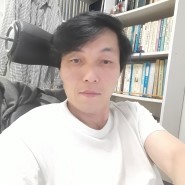 한신대 신학과 졸업
부천YMCA 중.고등부 교사 육군 3사단 백골부대 병장 전역 한신대 신학대학원 졸업(석사논문:한민족의 하느님신앙과 종교다원적 상황의 선교적 과제) 역사.종교연구가/심리상담사
댓글
크리스마스.아리안.구리.치우, 크리스마스.아리안.구리.치우 관련기사목록
|
많이 본 기사
기획·특집 많이 본 기사
|
